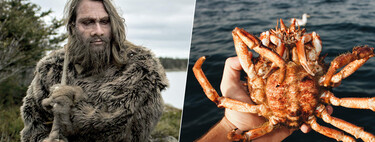We have heard a lot about the “paleo” diet, a diet based in theory on what our ancestors ate in the Paleolithic era, the “stone age.” But what did our ancestors eat at that time? Apparently, less meat than we thought.
Not very carnivorous. A new study has pointed out that the diets of people in pre-agrarian societies depended heavily on plants and not so much on meat. The study was carried out thanks to tooth enamel found in the Taforalt cave, in northeastern Morocco.
Hunters and gatherers. The remains contradict the notion that pre-agrarian societies relied heavily on hunting and less on gathering. The study shows us that the transition from more carnivorous diets to more vegetal ones took place thousands of years before the advent of agriculture and therefore was not a consequence of it.
“Our findings not only provide insight into the dietary practices of pre-agrarian human groups, but also highlight the complexity of human subsistence strategies in different regions. Understanding these patterns is crucial to unraveling the broad history of human evolution,” explained in a press release Zineb Moubtahij, co-author of the study.
Sinking your teeth. The study was possible thanks to the remains found in the Taforalt cave, a place considered the oldest known cemetery in Africa. Due to the abundance of human remains and their orderly arrangement, it is considered that the main function of this cave was to serve as a necropolis for the societies of the region.
The team responsible for the study analyzed the tooth enamel found in the bone remains. They performed an isotopic analysis based on isotopes of carbon, nitrogen, strontium, sulfur and zinc. From the relative concentrations of each isotope, the team was able to extrapolate information about the diet of the people to whom the teeth belonged.
Moubtahij and his team published the details of the work in an article in the magazine Nature Ecology & Evolution.
Times without dental hygiene. As Moubtahij explained in an article in The Conversation, the analysis also allowed us to find out some details about the dental health of those people. The first analyzes of the teeth showed a large number of cavities in them.
The abundance of cavities is somewhat more surprising than we might think, considering that we are talking about an era where dental hygiene practices were conspicuous by their absence. However, the latest analysis pointed out another determining factor in the diet: the starch of some of the foods consumed by the group.
A piece in the puzzle. There is still very little we know about the dietary habits of prehistoric humans. Until a few decades ago, what we could know about these customs was very limited: food that is not consumed quickly degrades, so except for bones and the like, the clues were scarce.
Research like this can help shed light on this issue, although it should be noted that the picture may be more complex. Just like Moubtahij pointed outthere may be an association between diet and nomadic and sedentary lifestyles.
The utensils found in this cave point towards a sedentary way of life, which could be associated with a greater weight of vegetables in the diet. In contrast, hunting groups would have maintained a nomadic life during this pre-agrarian era. In any case, the research confirms that the arrival of diets rich in vegetables was not a Neolithic invention but rather that this transition had already occurred thousands of years before.
In Xataka | The first miracle diet in history was experienced by King Sancho I of León and it made him lose 120 kilos
Image | Heiko Temming / Nicolas Perrault III










![[Img #74664]](https://thelatestnews.world/wp-content/uploads/2024/12/James-Watson-The-controversial-genius-behind-the-double-helix-150x150.jpg)




![[Img #74664]](https://thelatestnews.world/wp-content/uploads/2024/12/James-Watson-The-controversial-genius-behind-the-double-helix-300x200.jpg)
Add Comment